
Regions
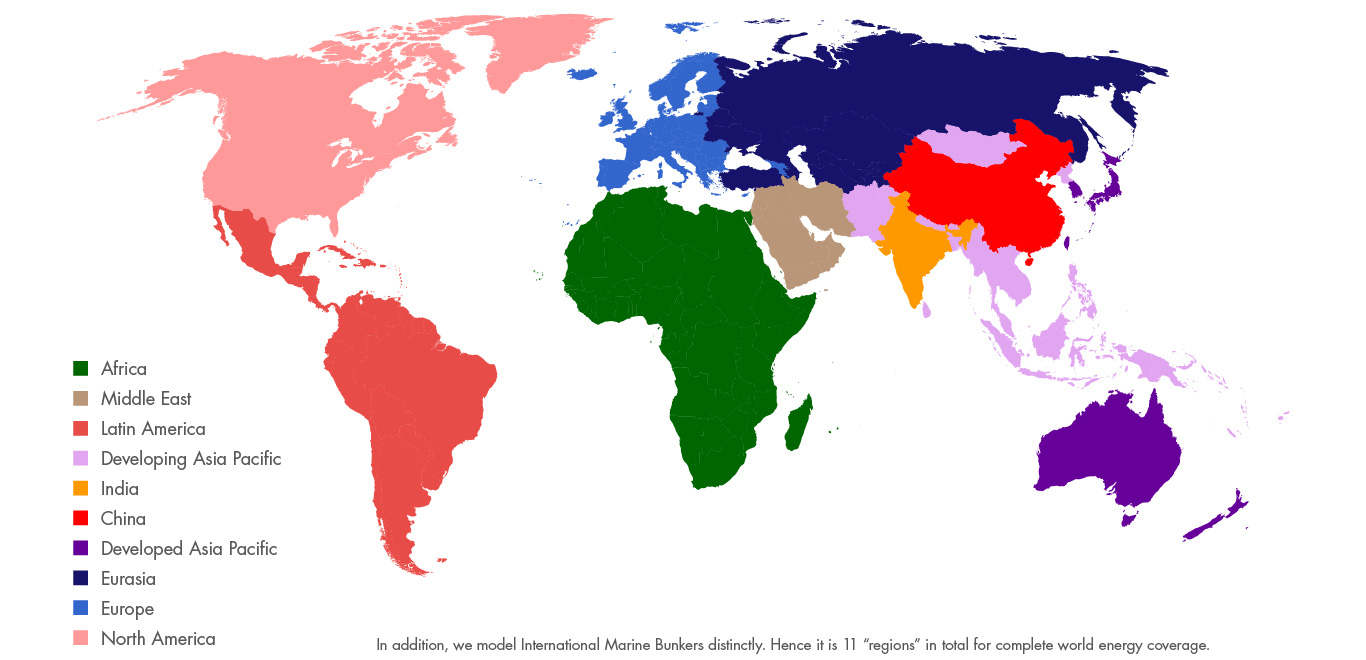
Paris Agreement and Sky scenario
Meeting the goals of the Paris Agreement

A new energy system is emerging
The Paris Agreement has sent a signal around the world: climate change is a serious issue that governments are determined to address

The Paris Agreement calls for an early peak in emissions
Net-zero emissions must be achieved during the second half of this century
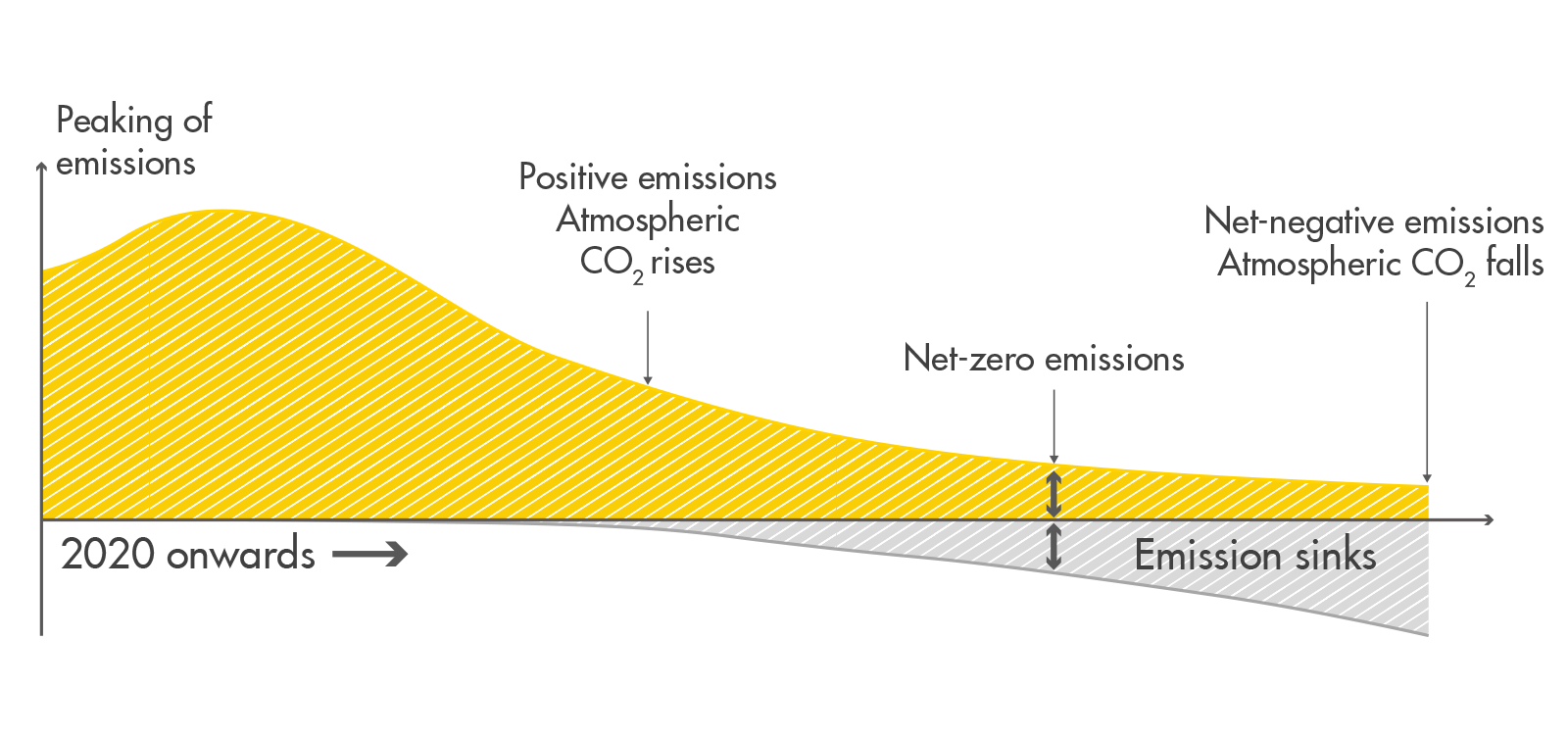
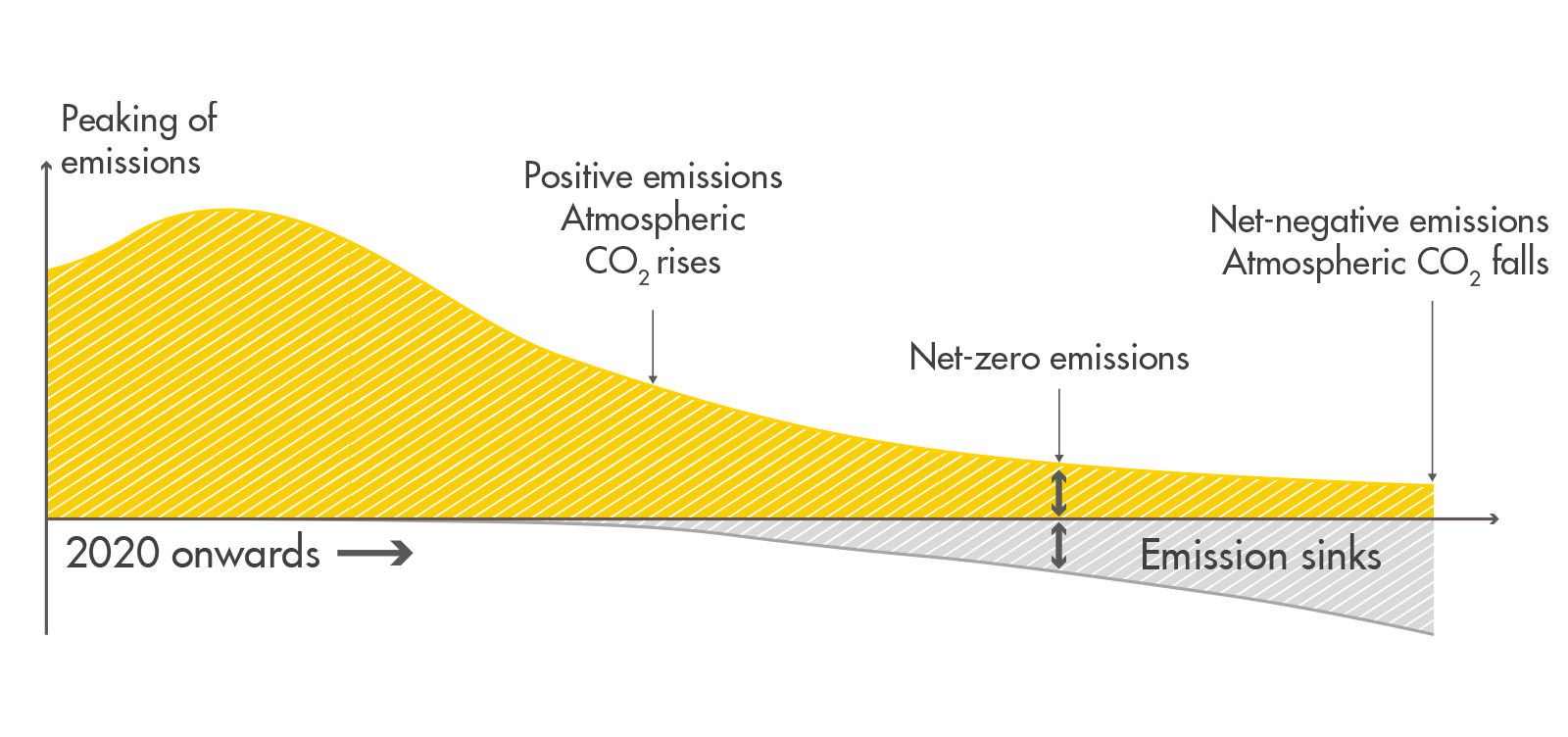
Source: Shell Schematic
Achieving net-zero emissions requires change at every level of the energy system
Sky relies on a complex combination of mutually reinforcing drivers
Carbon pricing mechanisms are adopted by governments globally during the 2020s, leading to a meaningful cost of CO2 embedded within consumer goods and services.
A step change in the efficiency of energy use leads to gains above historical trends.
The rate of electrification of final energy more than triples, with global electricity generation reaching a level nearly five times today’s level.
New energy sources grow up to fiftyfold, with primary energy from renewables overtaking fossil fuels in the 2050s.
Some 10,000 large carbon capture and storage facilities will be operational by 2070, compared to fewer than 50 in 2020.
Net-zero deforestation is achieved. In addition, an area the size of Brazil being reforested offers the possibility of limiting warming to 1.5°C, the ultimate ambition of the Paris Agreement.
Consumers change their mindset, choosing low-carbon, high-efficiency options to meet their energy needs.
Continuously strong efficiency gains are needed to moderate the pace of global energy demand growth
Rising incomes in developing regions drive global energy demand. This is moderated by significant energy efficiency improvements
Source: Shell analysis, Sky scenario
Deep electrification transforms global final energy consumption in Sky
Nevertheless, the need for liquid and gaseous fuels in hard-to-electrify sectors remains significant, with biofuels and hydrogen emerging as major fuels to satisfy growth in energy services demand
Source: Shell analysis, Sky scenario
*LHCF : Liquid hydrocarbon fuel
Global primary energy undergoes major shifts in Sky
Renewables dominate by mid-century, as wind and solar deployment ramps up
Source: Shell analysis, Sky scenario
Fossil fuel demand peaks in the 2030s, but remains in sectors where substitution is difficult
Global coal demand declines in the mid-2020s. Oil demand peaks in 2025, but remains critical for air transport and non-energy use. Natural gas serves as a transition fuel into the 2030s prior to a large-scale shift to non-fossil power generation.
Source: Shell analysis, Sky scenario
A radically different system emerges in Sky, providing more and cleaner energy
Renewables’ share of global energy grows significantly
The size of the pie chart indicates the growth of the energy system
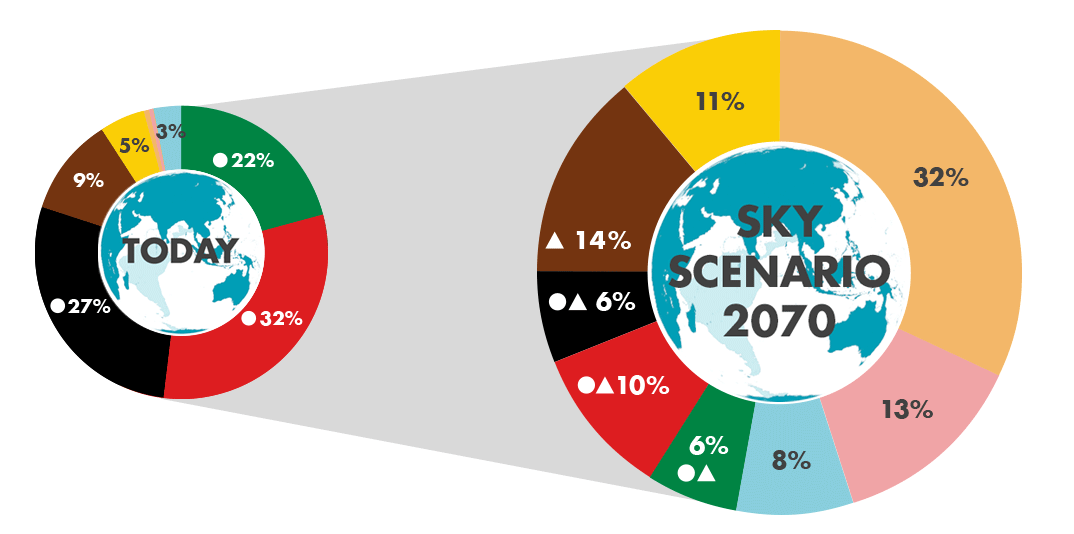
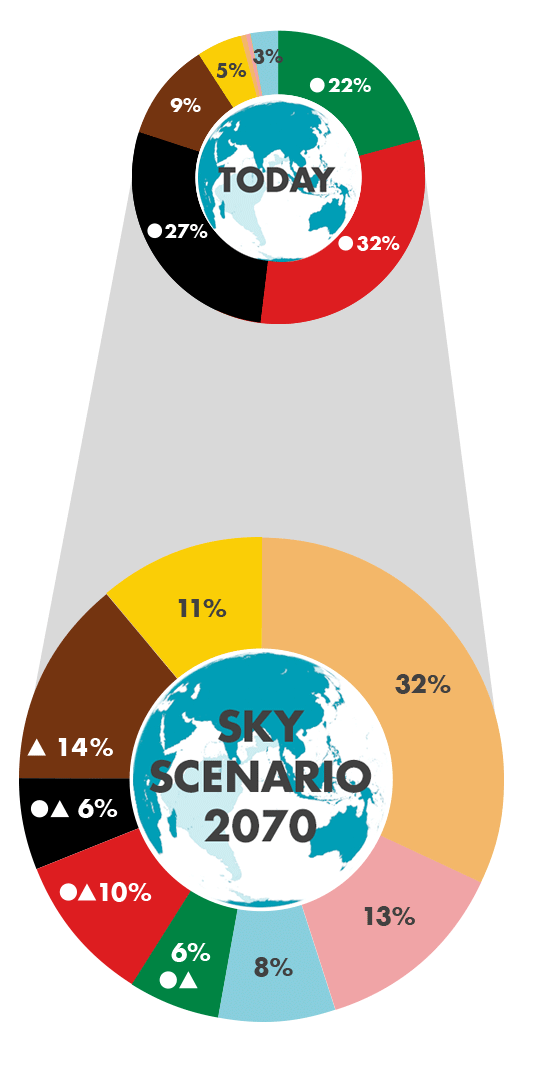
△ With carbon capture and storage
◯ Fossil
Source: Shell analysis
Sky achieves net-zero emissions by 2070
The scale of global change in Sky is unprecedented
Explore the icons below to learn more
 Explore the Sky signposts in more detail
Explore the Sky signposts in more detail
Global electricity consumption reaches 35,000 TWh/year, having risen close to 50% over the past decade
Action plans developed in C40 cities targeting net-zero emssions by 2050
Paris Agreement ratified
Global liquid fuel demand for passenger vehicles goes into decline
Governments reach an understanding on the appropriate cost of emissions
Global electricity consumption reaches 35,000 TWh/year, having risen close to 50% over the past decade
Accelerated investment in low-carbon energy quadruples solar PV and wind capacity to 5,000 GW total
First few countries to reach net-zero emissions
First intercontinental hydrogen flight
India leads the world in solar PV
India and China each reach one Gt CO2 per year stored
Solar PV passes oil as the largest energy source
Net deforestation comes to an end
Majority of trucks powered by electricity or hydrogen
850,000 10MW turbines
All reigons meet net-zero emissions
Biofuels overtake oil as the biggest component of liquid fuels
CO2 storage reaches 12 Gt per year
Global energy systems at 1,000 EJ per year (double 2010)
Last countries to reach net-zero emissions
Hydrogen at 10% of final energy
After celebrating 30 years at near-zero emissions, cities are in sight of achieving their circular economy goals globally
Sky shows a pathway to meeting the Paris goal of well below 2°C
A stretched 1.5°C ambition can be achieved by net global reforestation to the size of Brazil
Source: Shell analysis, MIT
Sky requires effective rewiring of the global economy in just 50 years
Significant change is needed across all sectors
Power generation in 2070
We could live in an increasingly electric world, powered mostly by renewables
In Sky, the rate of electrification by
2070
is more than triple the
historical rate of
2%
per decade since the
1960s
Electricity provides
over 50%
of energy consumed by
2070
Electricity demand
doubles
in OECD countries and is
6 times
greater in non-OECD countries in
2070,
compared with 2017
Industry & Agriculture in 2070
A mix of government policies and consumer demand could help industry and agriculture become more energy efficient
In Sky, some
10,000
carbon capture and storage
facilities are needed by
2070
to address emissions from industries
like steel, cement and iron
Net
CO2 emissions
from land-use
change reaches
zero by 2070
Transport in 2070
Electric cars could become the norm, alongside new fuels for trucks, ships and planes
In Sky, electric vehicles reach
cost parity
with internal combustion engine cars by
2025
By
2025
all new passenger vehicles bought
in the OECD and China are electric
By
2050
this is true globally
Electricity
and
hydrogen
vehicles revolutionise global
road transport, with
biofuels
continuing to play a
role across land, sea and air
Buildings & Cities in 2070
Homes and cities of the future could be carbon neutral, and super efficient
Buildings are almost
100%
electrified by
2070
Nearly
2 out of 3
people live in cities by
2050
Resource-efficient cities are compact,
integrated and collaborative
Explore the numbers behind the Sky scenario using our data dashboard
Explore, Compare. Share
Please read and accept our disclaimer to continue.
Read full disclaimer
This website contains data and analysis from Shell’s new Sky scenario. Unlike Shell’s previously published Mountains and Oceans exploratory scenarios, the Sky scenario is based on the assumption that society reaches the Paris Agreement’s goal of holding the rise in global average temperatures this century to well below two degrees Celsius (2°C) above pre-industrial levels. Unlike Shell’s Mountains and Oceans scenarios which unfolded in an open-ended way based upon plausible assumptions and quantifications, the Sky scenario was specifically designed to reach the Paris Agreement’s goal in a technically possible manner. These scenarios are a part of an ongoing process used in Shell for almost 50 years to challenge executives’ perspectives on the future business environment. They are designed to stretch management to consider even events that may only be remotely possible. Scenarios, therefore, are not intended to be predictions of likely future events or outcomes and investors should not rely on them when making an investment decision with regard to Royal Dutch Shell plc securities.
Additionally, it is important to note that Shell’s existing portfolio has been decades in development. While we believe our portfolio is resilient under a wide range of outlooks, including the IEA’s 450 scenario (World Energy Outlook 2016), it includes assets across a spectrum of energy intensities including some with above-average intensity. While we seek to enhance our operations’ average energy intensity through both the development of new projects and divestments, we have no immediate plans to move to a net-zero emissions portfolio over our investment horizon of 10-20 years. Although, we have no immediate plans to move to a net-zero emissions portfolio, in November of 2017, we announced our ambition to reduce the Net Carbon Footprint of our energy products in accordance with society’s implementation of the Paris Agreement’s goal of holding global average temperature to well below 2°C above pre-industrial levels. Accordingly, assuming society aligns itself with the Paris Agreement’s goals, we aim to reduce the Net Carbon Footprint of our energy products, which includes not only our direct and indirect carbon emissions, associated with producing the energy products which we sell, but also our customers’ emissions from their use of the energy products that we sell, by around 20% in 2035 and by around 50% in 2050.
The companies in which Royal Dutch Shell plc directly and indirectly owns investments are separate legal entities. In this website “Shell”, “Shell group” and “Royal Dutch Shell” are sometimes used for convenience where references are made to Royal Dutch Shell plc and its subsidiaries in general. Likewise, the words “we”, “us” and “our” are also used to refer to Royal Dutch Shell plc and subsidiaries in general or to those who work for them. These terms are also used where no useful purpose is served by identifying the particular entity or entities. ‘‘Subsidiaries’’, “Shell subsidiaries” and “Shell companies” as used in this website refer to entities over which Royal Dutch Shell plc either directly or indirectly has control. Entities and unincorporated arrangements over which Shell has joint control are generally referred to as “joint ventures” and “joint operations”, respectively. Entities over which Shell has significant influence but neither control nor joint control are referred to as “associates”. The term “Shell interest” is used for convenience to indicate the direct and/or indirect ownership interest held by Shell in an entity or unincorporated joint arrangement, after exclusion of all third-party interest.
This website contains forward-looking statements (within the meaning of the U.S. Private Securities Litigation Reform Act of 1995) concerning the financial condition, results of operations and businesses of Royal Dutch Shell. All statements other than statements of historical fact are, or may be deemed to be, forward-looking statements. Forward-looking statements are statements of future expectations that are based on management’s current expectations and assumptions and involve known and unknown risks and uncertainties that could cause actual results, performance or events to differ materially from those expressed or implied in these statements. Forward-looking statements include, among other things, statements concerning the potential exposure of Royal Dutch Shell to market risks and statements expressing management’s expectations, beliefs, estimates, forecasts, projections and assumptions. These forward-looking statements are identified by their use of terms and phrases such as “aim”, “ambition’, ‘‘anticipate’’, ‘‘believe’’, ‘‘could’’, ‘‘estimate’’, ‘‘expect’’, ‘‘goals’’, ‘‘intend’’, ‘‘may’’, ‘‘objectives’’, ‘‘outlook’’, ‘‘plan’’, ‘‘probably’’, ‘‘project’’, ‘‘risks’’, “schedule”, ‘‘seek’’, ‘‘should’’, ‘‘target’’, ‘‘will’’ and similar terms and phrases. There are a number of factors that could affect the future operations of Royal Dutch Shell and could cause those results to differ materially from those expressed in the forward-looking statements included in this website, including (without limitation): (a) price fluctuations in crude oil and natural gas; (b) changes in demand for Shell’s products; (c) currency fluctuations; (d) drilling and production results; (e) reserves estimates; (f) loss of market share and industry competition; (g) environmental and physical risks; (h) risks associated with the identification of suitable potential acquisition properties and targets, and successful negotiation and completion of such transactions; (i) the risk of doing business in developing countries and countries subject to international sanctions; (j) legislative, fiscal and regulatory developments including regulatory measures addressing climate change; (k) economic and financial market conditions in various countries and regions; (l) political risks, including the risks of expropriation and renegotiation of the terms of contracts with governmental entities, delays or advancements in the approval of projects and delays in the reimbursement for shared costs; and (m) changes in trading conditions. No assurance is provided that future dividend payments will match or exceed previous dividend payments. All forward-looking statements contained in this website are expressly qualified in their entirety by the cautionary statements contained or referred to in this section. Readers should not place undue reliance on forward-looking statements. Additional risk factors that may affect future results are contained in Royal Dutch Shell’s 20-F for the year ended December 31, 2018 (available at www.shell.com/investor and www.sec.gov ). These risk factors also expressly qualify all forward looking statements contained in this website and should be considered by the reader. Each forward-looking statement speaks only as of the date of this website 26 March, 2019. Neither Royal Dutch Shell plc nor any of its subsidiaries undertake any obligation to publicly update or revise any forward-looking statement as a result of new information, future events or other information. In light of these risks, results could differ materially from those stated, implied or inferred from the forward-looking statements contained in this website.
We may have used certain terms, such as resources, in this website that United States Securities and Exchange Commission (SEC) strictly prohibits us from including in our filings with the SEC. U.S. Investors are urged to consider closely the disclosure in our Form 20-F, File No 1-32575, available on the SEC website www.sec.gov.
You are now leaving the Shell global website.
The link you have selected will direct you to a website that is not controlled by Royal Dutch Shell plc or any member of the Shell Group. Accordingly, neither Royal Dutch Shell plc nor any member of the Shell Group endorses, adopts, certifies or otherwise validates the information and material contained on the linked website. This includes its sponsor and any policies, activities or services offered on the site, by any advertiser on the site or linked to the site.
Thank you for visiting the Shell global website.
The Sky scenario Highlights tells a story of how a new energy system could unfold between now and 2070. Scroll through the pages in order to see how the story could evolve.
The data tables were compiled by the Shell scenarios Team in February 2018. The forward-looking data represents the outcome of Shell's analysis, while historical data have come from various data sources.
Oil and gas data sources include Wood Mackenzie, Rystad Energy, IHS, International Energy Agency, US Energy Information Administration, Canadian National Energy Board, US Geological Survey and Shell analysis. The coal resources are derived from Bundesanstalt für Geowissenschaften und Rohstoffe (BGR) and Shell analysis. Renewable resources data include Navigant (Ecofys) and Shell analysis.
The figures for all energy sources and carriers are in exajoule (EJ) per year.
The figures for population are in millions of people and the figures for GDP in millions of USD (2010 USD, PPP).
The figures for energy service for passenger transport are in billion vehicle kilometres per year and for freight transport billion tonne kilometres per year.
For definitions or chart descriptions, please go to the Definitions tab.
Energy sources are those sources in found nature which can be used to provide energy. We follow the IEA's definitions of energy sources (www.iea.org/statistics/resources/balancedefinitions), but for convenience we will provide a shortened version here.
Energy carriers are useful forms of energy which can be consumed by end-use sectors. Energy carriers are created or generated from energy sources. For example, crude oil (energy source) is refined into gasoline, a liquid hydrocarbon fuel (energy carrier), which can then be used to fuel someone's car (end-use).
Energy carriers are useful forms of energy which can be consumed by end-use sectors. Energy carriers are created or generated from energy sources. For example, crude oil (energy source) is refined into gasoline, a liquid hydrocarbon fuel (energy carrier), which can then be used to fuel someone's car (end-use).

The Sky scenario was tested and quantified through the use of Shell's World Energy Model, Global Supply Model and the Global Energy Resources database. Find out more about these models here.

Read our World Energy Model Brochure for the complete methodology.
Find out more
Read our Global Supply Model brocure to find out.
Find out more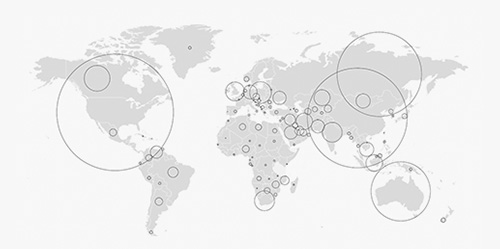
Explore how the world's fossil and renewable energy resources are distributed - now and in future.
Find out more